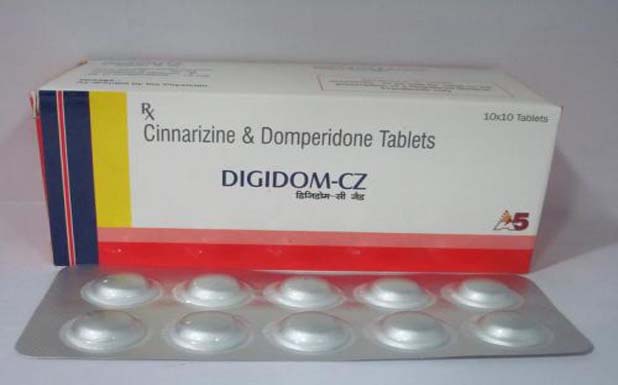Indications:
● As antiemetic
● Used in dyspepsia, epigastric pain, heartburn
● Meniere’s disease
● Vertigo
● Motion sickness
About Composition
Cinnarizine:
It is H1 blocker and is used as antihistaminic agent or antiemetic, used to treat motion sickness. Cinnarizine acts on calcium channel and blocks signal transmission between the vestibular apparatus of the inner ear and the vomiting centre of the hypothalamus.
Domperidone:
Domperidone is the specific dopamine antagonist. It is used as antiemetic. It increases the release of prolactin and speed up the peristalsis movement
Mechanism of Action
Histamine is an autacoid, it mediates varieties of action like contraction of the smooth muscles and vasodilation of arteries, inflammation, allergic reactions, so cinnarizine act as competitive inhibitor of the H1 receptor present on the mast cells. Cinnarizine acts by blocking the muscarinic receptor so thereby decrease secretions. It also acts by blocking the calcium channels.
Domperidone acts on dopaminergic receptor on the chemo trigger zone, blocks its action and thus inhibit the occurrence of vomiting.
Pharmacokinetics
Absorption- It is poorly absorbed whereas domperidone is absorbed by oral route.
Protein Binding- It 90 % protein bound whereas domperidone is 91% bound to protein.
Metabolism- It is metabolised in the liver with the help of cytochrome enzymes.
Excretion- It excreted by urine.
Side Effects
● Dry mouth
● Stomach upset
● Indigestion
● Drowsiness
● Hyperprolactinemia
● Rashes
Contraindications
● Domperidone is contraindicated in patients with underlying cardiac disorders
● Contraindicated in pregnancy
Storage
Store in cool place away from children
Directions
As directed by physician
